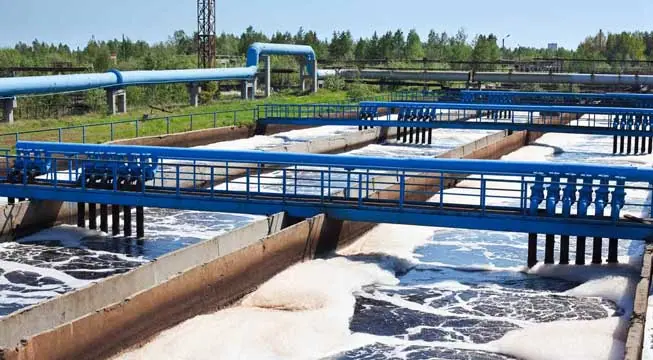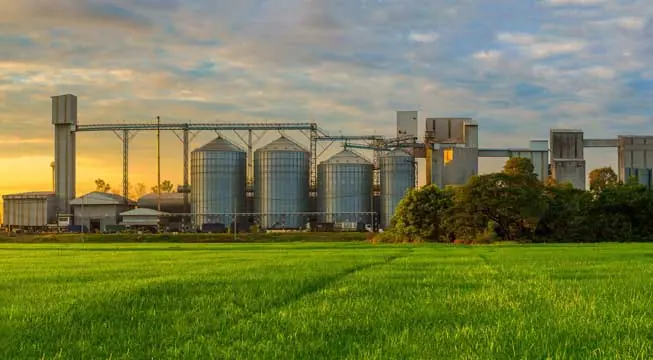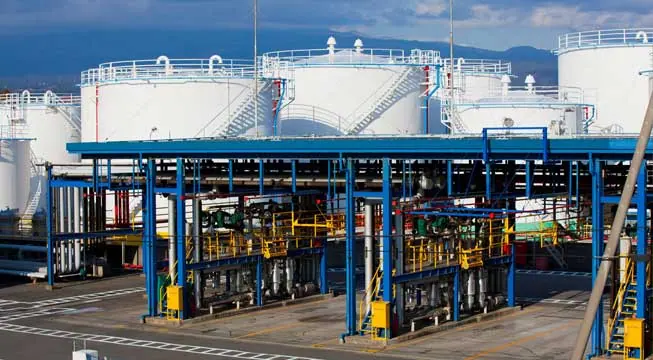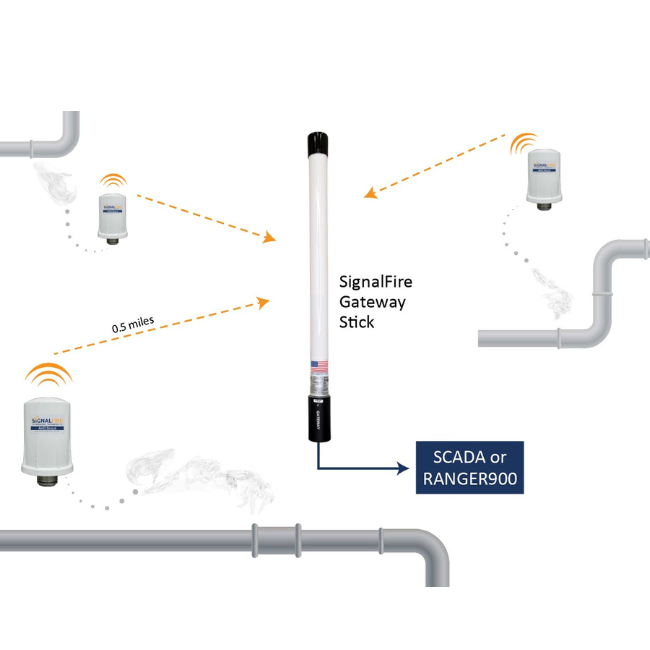
Get in Touch With Us and Tell Us About Your Toughest Monitoring and Control Challenges.
SignalFire Telemetry products connect you with crucial product and hardware data at any of your oil and gas operation sites—whether it’s a pump, pipeline, or storage tank.

SignalFire Telemetry devices install anywhere water asset monitoring is needed, whether it’s for collection purposes, treatment, or delivery.

SignalFire Telemetry devices can monitor key assets and can do it affordably, without any renovation or high-priced engineering costs. They install easily with no required cable or additional power. The data is available on your phone or computer and the cloud service can even output to your corporate system to integrate with the rest of your data and keep your operation running.

SignalFire Telemetry devices can monitor and manage water supplies and additives throughout the property, helping you avoid catastrophic shortages and keep your irrigation plan on track.

Avoid costly product loss in bulk storage tanks, terminals, and transportation movements. Whether calling for tank levels, gauge pressure, or even movement pumps or pipelines, SignalFire products can fill any monitoring gap throughout a facility.

Environmental fines for businesses are frustrating and can bring business to a standstill until they’re worked out. No business wants to hurt the environment, and in competitive markets stopping production affects the bottom line and staff. But there are effective and affordable solutions with SignalFire Telemetry devices.

Expand visibility and control of your refinery or petrochemical processing facility without expensive renovations or redesigns. And do it with your current gauges and hardware. SignalFire telemetry devices are designed to work in harsh chemical environments and meet the strictest safety and security standards

No matter the size of your service map, monitoring remote assets ensures efficiency and keeps your operation in compliance. That’s how SignalFire devices can really help, offering the most affordable and effective monitoring solution that will monitor liquid, gas, electricity, and other assets.

Explore the diverse applications of SignalFire Wireless Telemetry Systems across different industries.

Access our latest brochures to explore comprehensive information about our products and services.

Easily find the sensors that are compatible with our systems on this dedicated page.

Explore a comprehensive collection of images showcasing our products, installations, and real-world applications.

Farmers looking to operate more profitability are adopting wireless technology to better track, control, and connect operations. Whether a large dairy, small poultry or diversified crop farm, wireless sensor control systems can automate the data management of different assets such as irrigation systems, grain silos or water tank levels, scale readings, pump house equipment status and so much more. More than an automated vehicle to gather information, these wireless telemetry systems are configurable to shut down systems or alert an operator when thresholds are met.
Data capture on many farms is still very labor intensive, with farmhands regularly traveling into different areas to take manual measurements. In addition to operating with unprecise and quickly outdated data, farms need a large pool of workers to cover the expansive area of the farm several times a day. For a small farm, that can mean monitoring assets over 300-500 acres, 1,500-2,500 acres for a medium to a large farm and 5,000-10,000 acres for a mega farm. As workers operate in isolation from one another, data often is not shared throughout the farm operation.
A farm monitoring system using sensors to monitor and report on farm operations eliminates the need for operator interfaces. These sensor control systems can be used remotely to manage different assets from the convenience of a laptop.
Silo monitoring is a good example where a wireless sensor control system can serve a farm well. The graphic below illustrates the working configuration of a SignalFire Remote Sensing System in monitoring grain levels in silos. Level sensors installed with the silos are physically connected to Sentinel nodes (in this case, a solar powered node) that power and extract data from the sensors for transmission to a gateway antenna.
In this network, an Ethernet interface module connects to the gateway to tie information into either a local Wifi network for local access or a modem that connects the Internet and a cloud service provider so that data is accessible across a co-op or is shared with a supplier or a customer.
With data stored in the clouds, wireless networks offer real-time status into farming operation that can be viewed autonomously on different devices such as smart phones. Data consolidation provides the opportunity to analyze historical information for insights into trends to make better decisions in production.
By automating silo monitoring activities, farmhands know when they need to switch to another silo or refill the measured silo. As a result, farmers increase production efficiency as well as gain true transparency over operations by receiving a constant status of silos and other operations. The same wireless process can be used to monitor other assets throughout the farm for a completed connected and automated operation.
Read about how SignalFire offers a wireless asset monitoring and control system in monitoring solid levels and temperatures in silos here.
For more information on Signal Remote Sensing Systems, click here.
Get in Touch With Us and Tell Us About Your Toughest Monitoring and Control Challenges.





"*" indicates required fields

